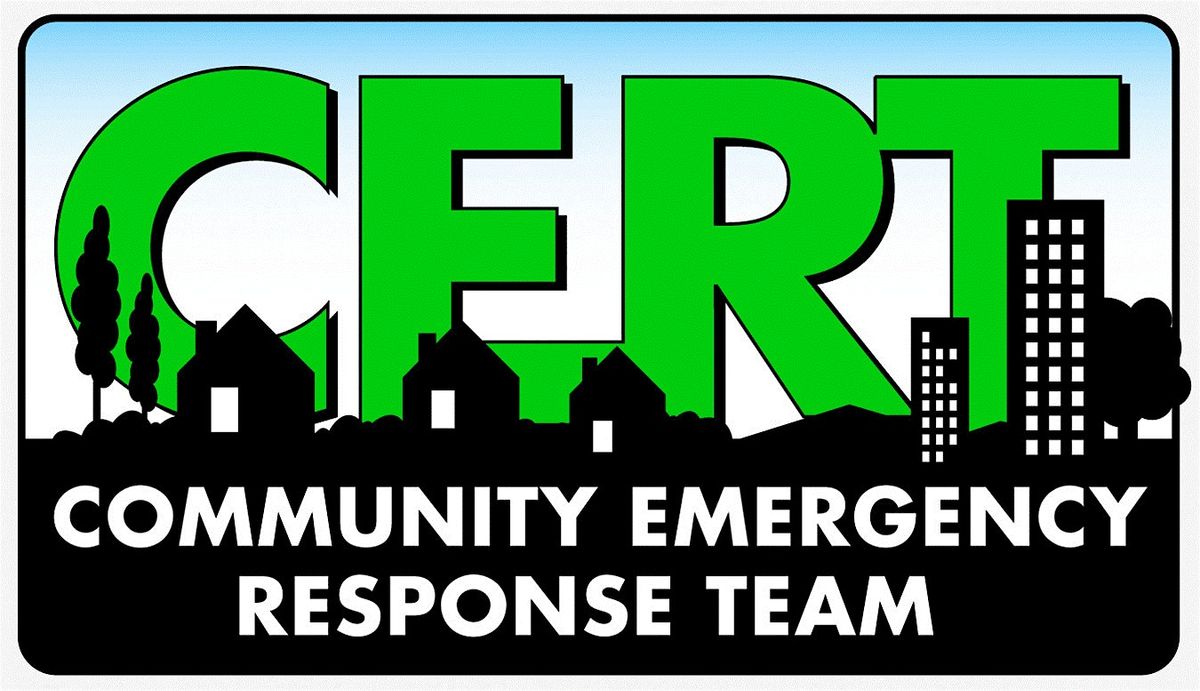CERT Basic Training / CSUSB 3-Day Course
Schedule
Wed Apr 02 2025 at 08:30 am to 05:00 pm
UTC-07:00Location
California State University, San Bernardino | San Bernardino, CA
 "Learn basic emergency response skills at Cal State University SB!" We welcome the community to learn to prepare your neighbors and family.
"Learn basic emergency response skills at Cal State University SB!" We welcome the community to learn to prepare your neighbors and family.About this Event
One reservation is needed per person. Reservations only need to be made for the first day, allowing you access to all three training days.***
The San Bernardino County Office of Emergency Services and California State University San Bernardino invite you to participate in free CERT Basic Training. CERT educates volunteers about disaster preparedness for the hazards that may impact their area and trains volunteers in basic disaster response skills, such as fire safety, light search and rescue, team organization, and disaster medical operations. CERT offers a consistent, nationwide approach to volunteer training and organization that professional responders can rely on during disaster situations, allowing them to focus on more complex tasks. CERT volunteers also support the emergency management mission of whole community preparedness, public outreach, and preparation before, during, and after a disaster. This 20-hour free training will take place over three days.
Agenda
Unit 1 : Disaster Preparedness (DAY 1 - Wednesday April 2nd)
Info: -Roles and Responsibilities for Community Preparedness: How everyone in a community has a role in disaster preparedness.-Elements of Disasters and Their Impact on Infrastructure: The potential effects of extreme emergencies and disasters on electrical service, emergency services, telephone communication, transportation, and availability of food, water, shelter, and fuel.
-Personal and Organizational Preparedness: How you can prepare in advance to improve the quality of your survival and to reduce the damage from hazards
Unit 2 : CERT Organization (DAY 1 - Wednesday April 2nd)
Info: -CERT Organization: How to organize and deploy
-CERT resources according to CERT organizational principles.
-CERT Size-up: How to conduct the continual data-gathering and evaluation process at the scene of a disaster or emergency. Rescuer Safety: How to protect your own safety and your buddy’s during search and rescue.
-Documentation: Strategies for documenting situation and resource status.
Unit 3 : Disaster Medical Operations Part 1 (DAY 1 - Wednesday April 2nd)
Info: -An introduction to disaster medical operations training provided to CERTs
-An overview of ways to respond to emergencies when deployed by your sponsoring organization or in every day life
Unit 4 : Disaster Medical Operations Part 2 (DAY 2 - Thursday, April 3rd)
Info: -Assisting Disaster Medical Operations: How to assist by controlling bleeding, maintaining normal body temperature, and more.
-Mass Casualty Incidents: How to assist first responders in responding to mass casualty incidents.
-Functions of Disaster Medical Operations: Major functions of disaster medical operations.
-Disaster Medical Treatment Areas: Types of medical treatment areas. Head-to-Toe Assessment: -How to perform a head-to-toe assessment to identify and treat injuries.
-Public Health Considerations: How to maintain hygiene and sanitation.
Unit 5 : Disaster Psychology (DAY 2 - Thursday, April 3rd)
Info: -Disaster Psychology: The psychological impact a disaster has on rescuers and survivors, and lessons on providing components of “psychological first aid.”
-Caring for Yourself and Survivors: Steps volunteers can take individually and as part of a CERT before, following, and after a disaster.
Unit 7 : Light Search and Rescue (DAY 2 - Thursday, April 3rd)
Info: -Search and Rescue Size-up: How to size up the situation in which the search and rescue teams will operate.
-Conducting Interior and Exterior Search Operations: How to search systematically for disaster survivors.
-Conducting Rescue Operations: Safe techniques for lifting, leveraging, cribbing, and survivor removal.
Unit 6 : Fire Safety and Utility Control (DAY 3 - Friday, April 4th)
Info: -Fire Chemistry: How fire occurs, classes of fire, and choosing the correct means to extinguish each type of fire.
-Fire Size-up Considerations: How to evaluate fires, assess firefighting resources and determine a course of action.
-Portable Fire Extinguishers: How to identify types of portable fire extinguishers and how to operate them.
-Fire Suppression Safety: How to decide whether to extinguish a fire and how to approach and extinguish a fire safely.
-Fire and Utility Hazards: How to identify potential fire and utility hazards in the home and workplace and implement successful fire prevention strategies.
Unit 8 : CERT and Terrorism (DAY 3 - Friday, April 4th)
Info: -Terrorism: Defining terrorism, including the goals and tactics of some terrorist groups, and detailing how to respond when an active shooter is in your vicinity.
-Eight Signs of Terrorism: The eight signs of terrorism and how to report suspicious activity.
-Preparing for Your Neighborhood: Steps to take to be prepared at home, work, and in your neighborhood.
-Hazardous Materials (HazMat) and Chemical, Biological, Radiological, Nuclear and Explosives (CBRNE): Identifying some basic guidelines during a Hazmat or CBRNE event.
Unit 9 : Course Review and Disaster Exercise (DAY 3 - Friday, April 4th)
Info: s unit includes:
-A review of the key points from the course
-A final exam
-A final exercise
Where is it happening?
California State University, San Bernardino, United StatesUSD 0.00



















